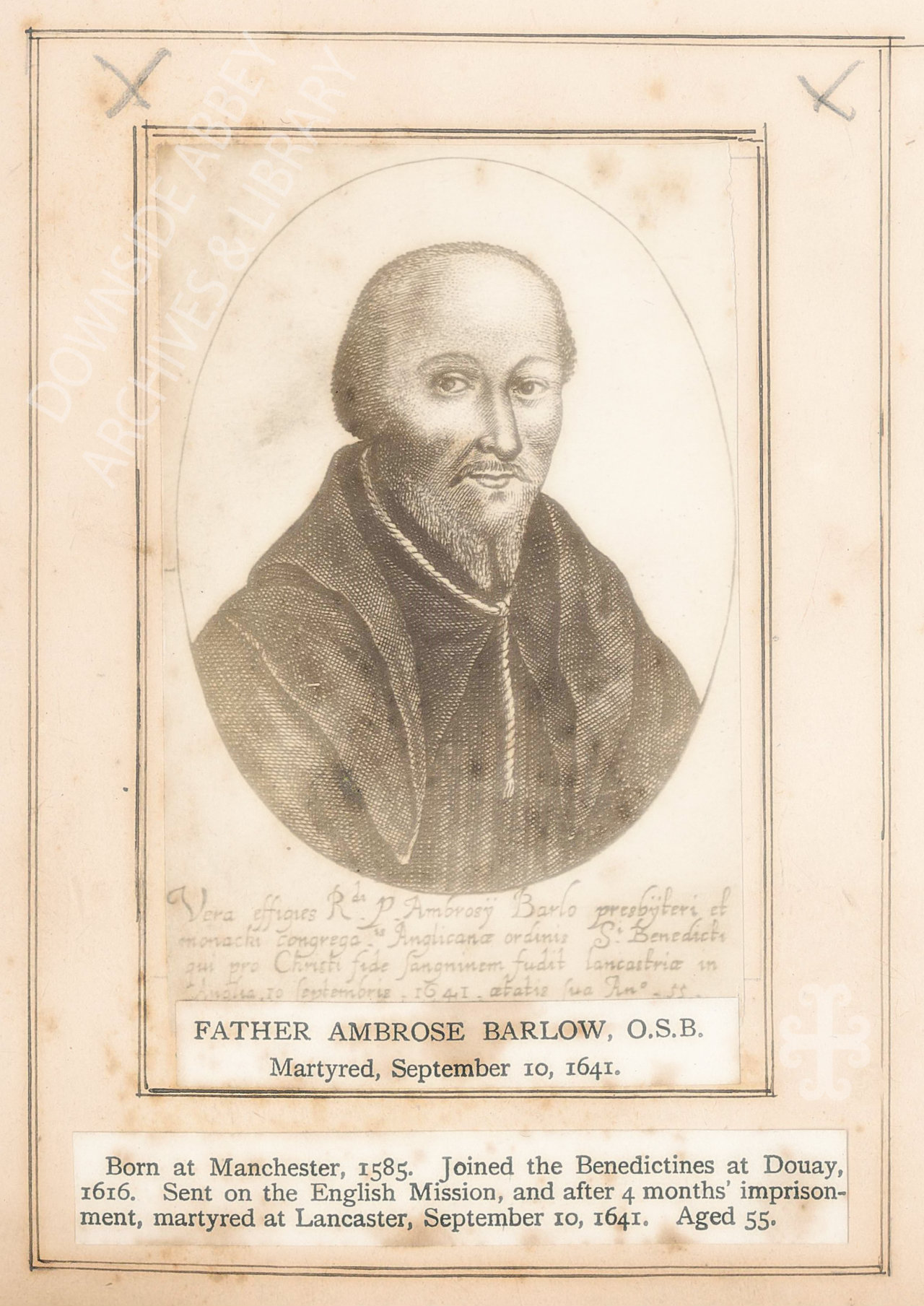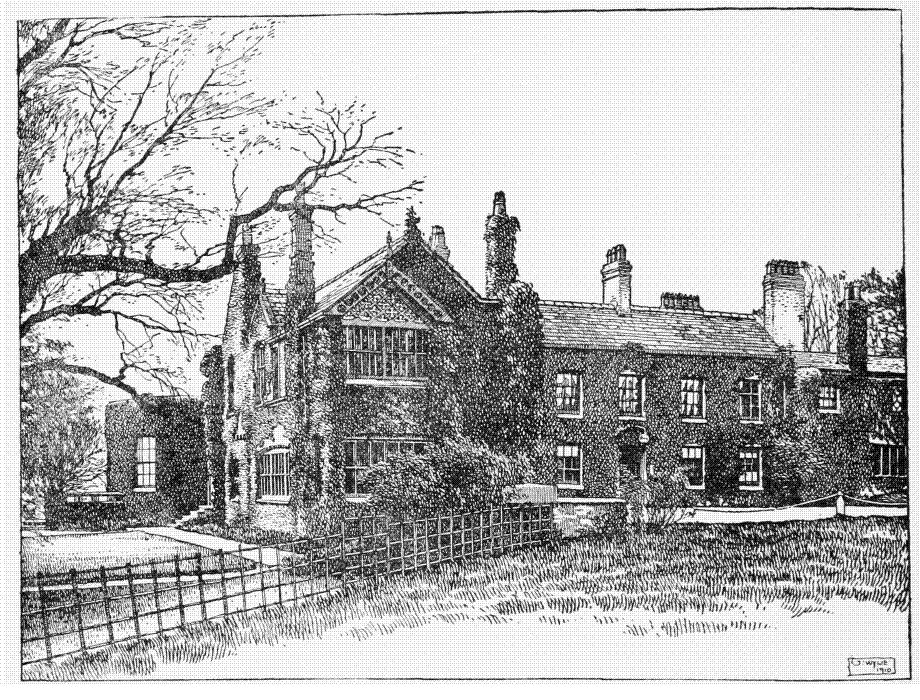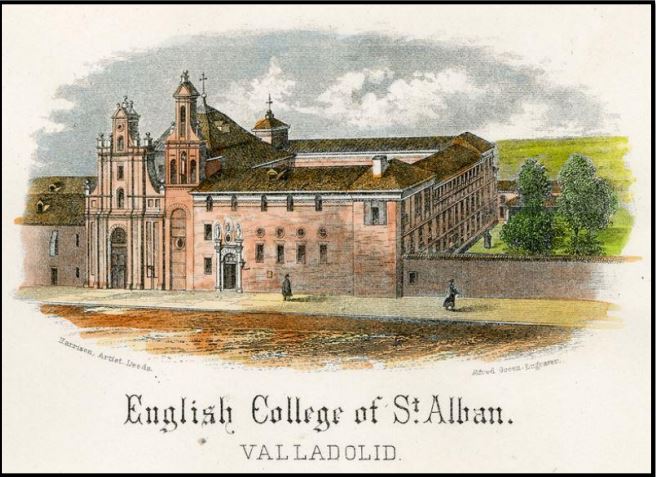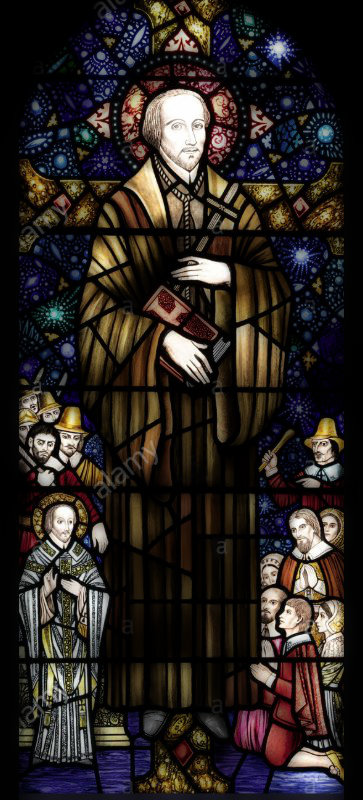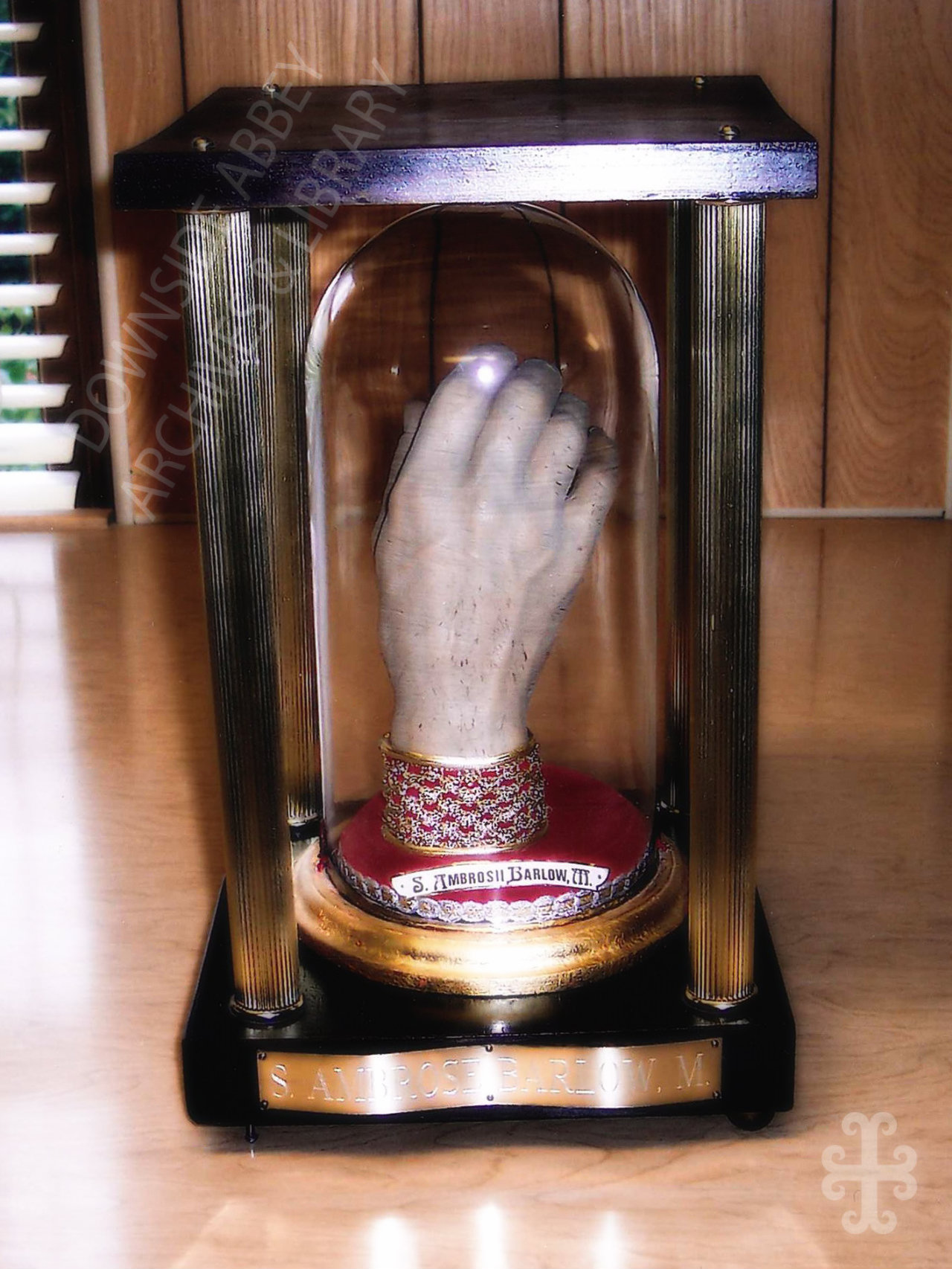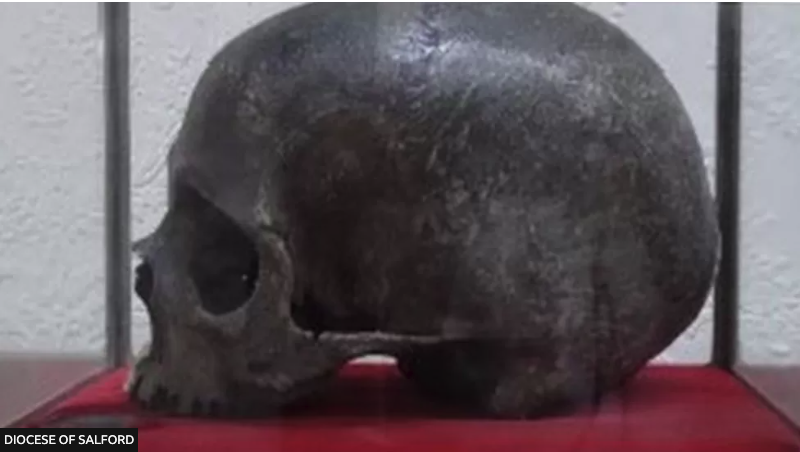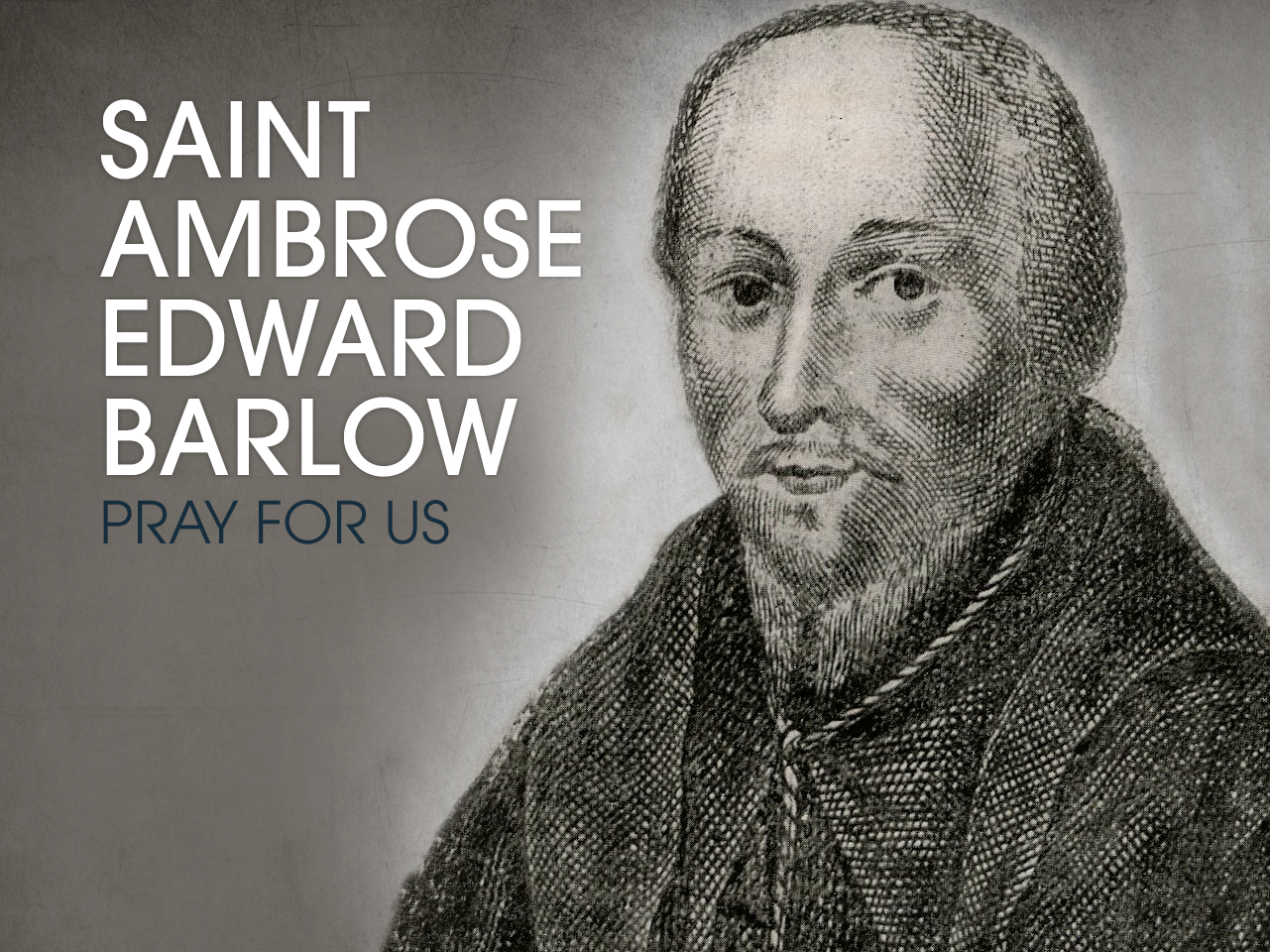Ambrose, Also known as Ambrose Brereton, Ambrose Radcliffe, Edward Ambrose Barlow, was born at Barlow Hall, Chorlton-cum-Hardy, near Manchester in 1585. He was the fourth son of the nobleman Sir Alexander Barlow and his wife Mary, daughter of Sir Urian Brereton of Handforth Hall. The Barlow family had been reluctant converts to the Church of England following the suppression of the Catholic Church in England and Wales. Ambrose’s grandfather died in 1584 while imprisoned for his beliefs and Sir Alexander Barlow had two thirds of his estate confiscated as a result of his refusing to conform with the rules of the new established religion. On 30 November 1585, Ambrose was baptised at Didsbury Chapel and his baptism entry reads “Edwarde legal sonne of Alex’ Barlowe gent’ 30.” Ambrose went on to adhere to the Anglican faith until 1607, when he converted to Roman Catholicism.

-baptism entry for St Ambrose Edward Barlow, OSB, please click on the image for greater detail
In 1597, Ambrose was taken into the stewardship of Sir Uryan Legh, a relative who would care for him while he served out his apprenticeship as a page. However, upon completing this service, Barlow realized that his true vocation was for the priesthood, so like the sons of many of the Lancashire Catholic gentry, Edward decided to travel to Douai where, since 1569, an English College created by William Allen had operated.
This missionary college or seminary, working with neighbouring monasteries, was intended to provide university-style education to young men prior to them being sent to England to maintain and promote the Catholic faith. So he travelled to Douai in France to study before attending the Royal College of Saint Alban in Valladolid, Spain. In 1615, he returned to Douai where he became a member of the Order of Saint Benedict, joining the community of St Gregory the Great (now Downside Abbey) and was ordained as a priest in 1617.
The decision by Ambrose to take religious orders is summarized by Richard Challoner author of Memoirs of Missionary Priests:
“As he grew up and considered the emptiness and vanity of the transitory toys of this life and the greatness of things eternal, he took a resolution to withdraw himself from the world and to go abroad, in order to procure those helps of virtue and learning, which might qualify him for the priesthood and enable him to be of some assistance to his native country.”
Well aware of the activities of English spies on the Continent looking for persons likely to return to England as priests, Edward operated under his mother’s maiden name, Brereton. Merely entering the country as a Catholic priest was treasonable and hazardous. Ports were dangerous and officials had descriptions from spies of those attempting to return to these shores. In Elizabeth I’s “Proclamation against Jesuits”, 1591 it was said:-
“And furthermore, because it is known and proved by common experience…that they do come into the same (realm) by secret creeks and landing places, disguised both in names and persons, some in apparel as soldiers, mariners or merchants, pretending that they have heretofore been taken prisoners and put into galleys and delivered. Some come as gentlemen with contrary names in comely apparel as though they had travelled to foreign countries for knowledge and generally all, for the most part, are clothed like gentlemen in apparel and many as gallants, yea in all colours and with feathers and such like, disguising themselves and many of them in their behaviour as ruffians, far off to be thought or suspected to be friars, priests, Jesuits or popish scholars.”
After his ordination into the priesthood, Ambrose returned to Barlow Hall, before taking up residence at the home of Sir Thomas Tyldesley, Morleys Hall, Astley. Sir Thomas’ grandmother had arranged for a pension to be made available to the priest which would enable him to carry out his priestly duties amongst the poor Catholics within his parish. From there he secretly catered for the needs of Catholic ‘parishioners’, offering daily Mass and reciting his Office and Rosary for the next twenty-four years. To avoid detection by the Protestant authorities, he devised a four-week routine in which he travelled throughout the parish for four weeks and then remained within the Hall for five weeks. He would often visit his cousins, the Downes, at their residence of Wardley Hall and conduct Mass for the gathered congregation.
Ambrose was arrested four times during his travels and released without charge. King Charles I signed a proclamation on 7 March 1641, which decreed that all priests should leave the country within one calendar month or face being arrested and treated as traitors, resulting in imprisonment or death. Ambrose’s parishioners implored him to flee or at least go into hiding but he refused, reasoning that he could not die a better death than to be martyred for being a Catholic priest.. Their fears were compounded by a recent stroke which had resulted in the 56-year-old priest being partially paralysed. “Let them fear that have anything to lose which they are unwilling to part with”, he told them.
On 25 April 1641, Easter Day, Ambrose and his congregation of around 100 people were surrounded at Morleys Hall, Astley by the Vicar of Leigh and his armed congregation of some 400. Father Ambrose surrendered and his parishioners were released after their names had been recorded. The priest was restrained, then taken on a horse with a man behind him to prevent his falling, and escorted by a band of sixty people to the Justice of the Peace at Winwick, before being transported to Lancaster Castle. It was at this time he had a premonition of what his fate would be since it is reported that Edmund Arrowsmith appeared to him in a dream and said that he too would become a martyr.
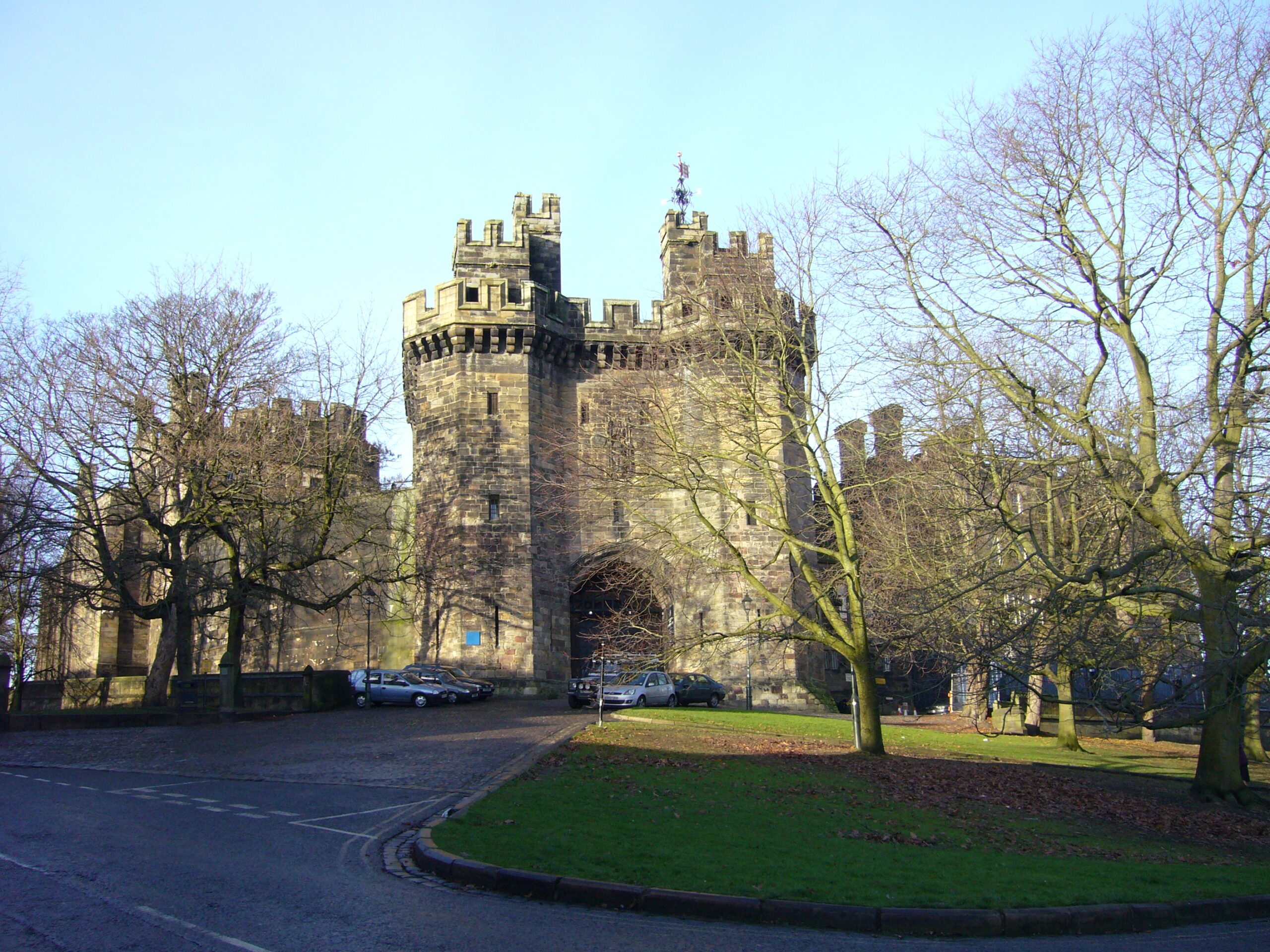
-Lancaster Castle, please click on the image for greater detail
Father Ambrose appeared before the presiding judge, Sir Robert Heath, on 7 September when he professed his adherence to the Catholic faith and defended his actions. On 8 September, the feast of the Nativity of Mary, Sir Robert Heath found Ambrose guilty and sentenced him to be executed. Two days later, he was taken from Lancaster Castle, drawn on a hurdle to the place of execution, hanged, dismembered, quartered and boiled in oil. His head was afterwards exposed on a pike. His cousin, Francis Downes, Lord of Wardley Hall, a devout Catholic rescued his skull and preserved it at Wardley where it remains to this day. When the news of his death and martyrdom reached his Benedictine brothers at Douai Abbey, a Mass of Thanksgiving and the Te Deum were ordered to be sung.
Several relics of Ambrose are also preserved, his jaw bone is held at the Church of St Ambrose of Milan, Barlow Moor, Manchester, one of his hands is preserved at Stanbrook Abbey now at Wass, North Yorkshire and another hand is at Mount Angel Abbey in St Benedict, Oregon.
The skull of St Ambrose Barlow is on display at the top of the main staircase in Wardley Hall, Worsley, Greater Manchester – the official residence of the Roman Catholic Bishop of Salford. It was discovered in a casket in 1745 in Wardley Hall when a wall of the original chapel was being demolished. The hall has been known as the House of the Skull ever since.
O God, Who were pleased to give light to Your Church by adorning blessed Ambrose with the victory of martyrdom, graciously grant that, as he imitated the Lord’s Passion, so we may, by following in his footsteps, be worthy to attain eternal joys.
Love,
Matthew

